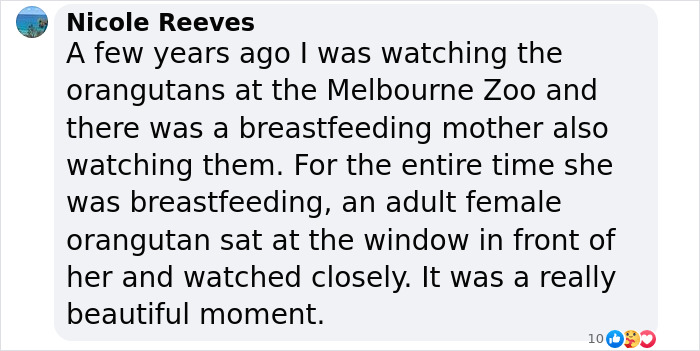A heartwarming story unfolded in Dublin Zoo when 30 breastfeeding mothers came to teach Mujur, a 19-year-old female Orangutan, how to feed her infant, a baby male whose father is Sibu, the establishment’s beloved primate patriarch who sadly passed away in February 2024.
With a little bit over 100,000 individuals in existence, the Bornean orangutan is a critically endangered species, according to the WWF. Their birthrate is also notoriously low among primates, with females giving birth to only one baby every seven to nine years, making the survival of every infant even more critical.
Mujur previously gave birth to two babies in 2019 and 2022, but she did not sufficiently bond with either of them, resulting in their passing. As soon as she became pregnant again, Dublin Zoo’s staff knew that conventional methods wouldn’t cut it, so they decided to stage maternal workshops with human mothers.
“Mujur was extremely interested in watching the women feed their babies through the glass, even mirroring some of their actions,” said Lizzie Reeves, a midwife and lactation specialist who is part of the breastfeeding team at the National Maternity Hospital in Dublin and the person responsible for organizing the group.
A group of 30 women put together a “breastfeeding seminar” for Mujur, an orangutan mom at the Dublin Zoo in Ireland, who had problems feeding her babies in the past

“A lot of women said: ‘Look, an orangutan doesn’t wear a T-shirt.’ So they whipped off their T-shirts and their bras so Mujur could literally see everything,” Reeves told the Irish Times.
The zoo has since released wholesome images that show the orangutan mother watching attentively as one of the volunteers, Nora Murphy, breastfeeds her 10-month-old daughter, Elodi.
“You are going from being a mother yourself to trying to help a mother to be. You would be talking to her saying: ‘Look this is what you are meant to do,’” she said, stating that she’s rooting for the orangutan.
“She would stare at you really looking at what you were doing. She was hand-expressing as time went on, which was magic.”
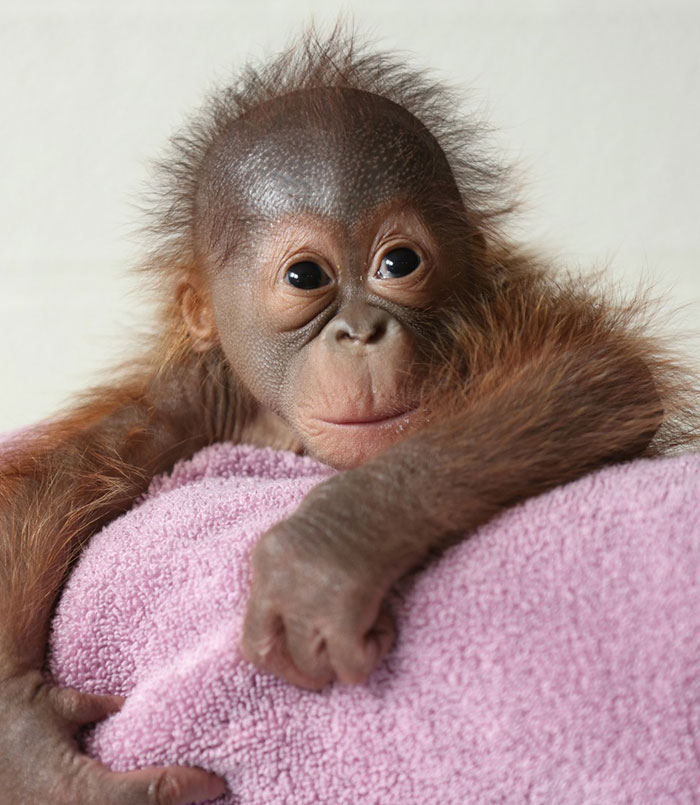
Mujur made a lot of progress after being shown videos of other orangutans feeding their babies, and she showed good maternal care toward her newborn. However, she couldn’t quite get down the correct technique to breastfeed the baby, as she did not know how to hold him.
This forced the establishment to make the difficult decision to separate the two and commence bottle-feeding the infant while his mother attended her lessons.
The bittersweet separation might end up being permanent, as zoo officials have decided it would be best for the baby to be transferred to Monkey World, a 65-acre center in Dorset, England, which specializes in raising orangutans.
“The whole team has already fallen hopelessly in love with him, and it will be difficult to say goodbye, however we are confident that he is being sent to the best possible place for him to continue to develop and thrive,” a zoo worker explained.
Research shows that the bond between mother and child in orangutans is one of the strongest in the animal kingdom
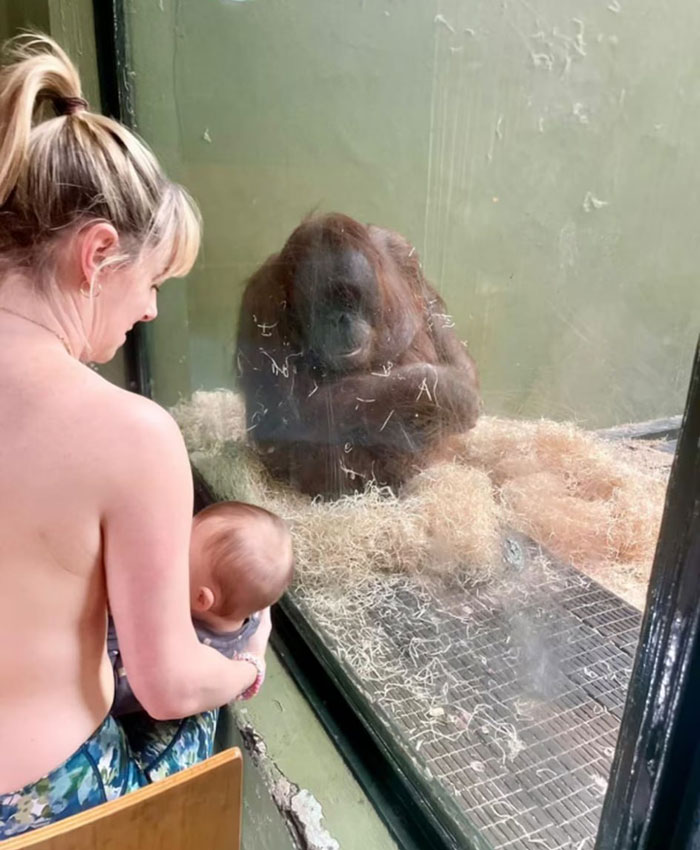
The species’ moms are notorious for being the “champions of breastfeeding,” as they can feed their offspring this way for up to eight years, the longest of any other primate.
Experts explain that the behavior comes as a result of the harsh conditions they’ve evolved into and the rarity of each birth.
“Having a long period of nursing may be a way for juveniles to learn the ins and outs of living in a challenging environment with limited and unpredictable food resources,” explains Tanya Smith, a researcher at Griffith University’s Australian Research Centre for Human Evolution.
As Orangutans lead solitary lives in the treetops of the rainforests of Borneo and Sumatra, studying without interfering with their habitat can be tricky. Because of this, researchers have turned to bone remains, specifically teeth, to correlate their eating habits with their age.
“Teeth are like a biological hard drive that’s recording what’s happening in your body each day,” the expert explained.
Like trees, teeth have growth rings that provide a timeline of an animal’s life. This, coupled with an analysis of the levels of barium at each stage, indicates when an orangutan was consuming milk.
Orangutans have evolved to breastfeed their infants for the longest time of all primates as a response to harsh living conditions and food shortages
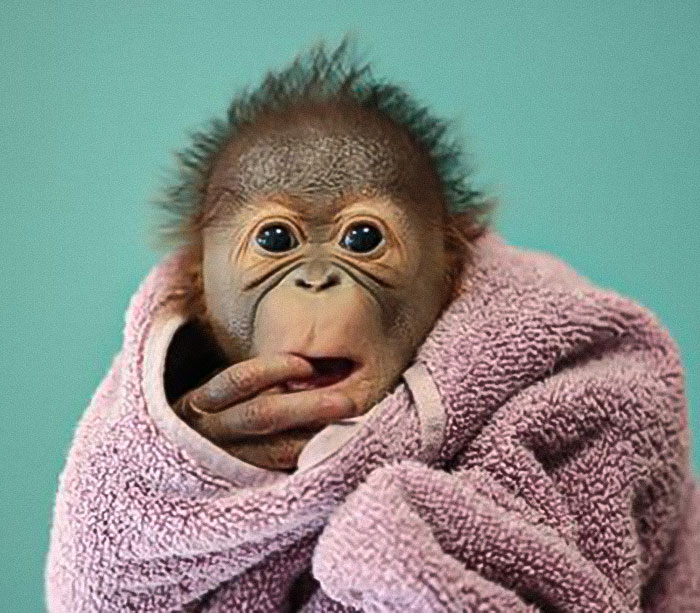
Their findings confirmed that the babies maintained a milk-only diet for the first 12 to 18 months of their lives and added fruits and vegetables as they grew, but they never fully weaned off breastfeeding until eight or even nine years had passed.
Using milk as a countermeasure to food scarcity is not exclusive to orangutans, as chimpanzee mothers wean their young at about age 5, while gorilla moms stop nursing when their offspring are about 4.
Homo sapiens, as recent studies explain, also maintained prolonged periods of breastfeeding for the majority of their hunter-gatherer existence and only started weaning off their infants early when agriculture became the preferred way of life.
Breast milk remains as nutritious as ever, as it contains thousands of distinct bioactive molecules that protect against infection and inflammation and contribute to immune maturation, organ development, and healthy microbial colonization.
Pasteurized donor milk is commonly provided to high-risk infants, and mothers are encouraged to freeze their milk at some point in lactation for future infant feedings.
Viewers were moved by the mothers’ gesture, while others lamented the separation of Mujur and her child
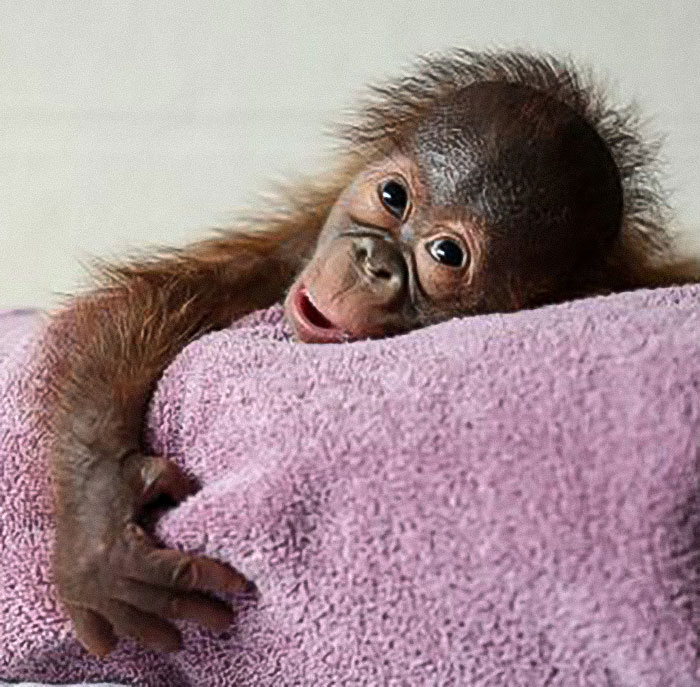
Netizens were moved by the story, with many commending the mothers’ efforts in teaching Mujur how to breastfeed her baby. Others, however, were left saddened by their separation and lamented the complex situation the species finds itself in, having their natural habitat reduced and being forced to live in captivity.
“Considering how many women experience post natal depression, this mama is probably experiencing the same thing. It’s so sad seeing primates in zoos,” wrote one reader on Facebook.
“A few years ago I was watching the orangutans at the Melbourne Zoo and there was a breastfeeding mother also watching them. For the entire time she was breastfeeding, an adult female orangutan sat at the window in front of her and watched closely. It was a really beautiful moment,” shared another.
“How cruel and confusing for that poor animal. Probably depressed and sick of being stared at all day long. How selfish human beings are,” pondered one user.
“It’s disappointing it didn’t work and that the infant was removed for bottle feeding,” lamented another.
According to the Smithsonian’s National Zoo, Orangutan females have an average of five babies in their lifetime. Mujur, being a mother of three, may still be blessed with a couple of infants in the future, and she’s now more prepared than ever, thanks to the efforts of Dublin Zoo’s moms.
“What a beautiful gesture!” writes one user, as others join in to congratulate the 30 volunteer mothers for their maternal workshop


